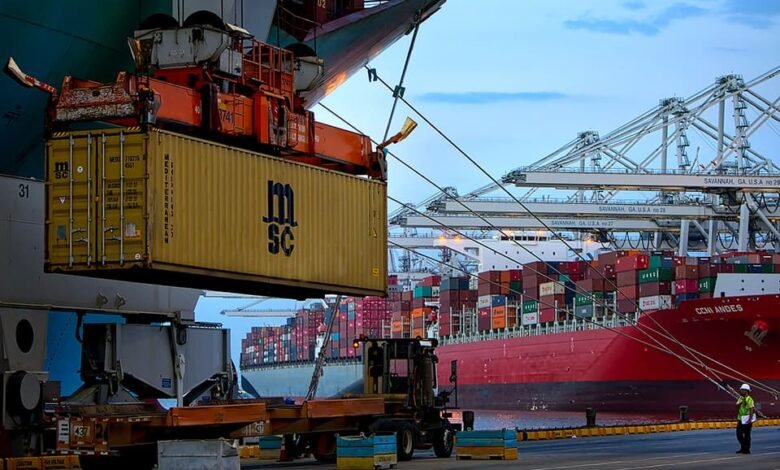Navigating Shipping to Italy: A Guide for Smooth Transactions

Italy, renowned for its rich history, exquisite cuisine, and vibrant culture, is not only a destination for travelers but also a significant hub for international trade. If you’re involved in shipping goods to Italy, whether as a business or an individual, understanding the intricacies of the process can ensure smooth transactions and customer satisfaction. From customs regulations to preferred shipping methods, here’s a comprehensive guide to navigating shipping to Italy.
Understanding Customs Regulations
Before shipping anything to Italy, it’s crucial to familiarize yourself with the country’s customs regulations. Italy, like many other countries, has specific rules governing the importation of goods, which can vary depending on the type of item, its value, and its intended use. Failure to comply with these regulations can lead to delays, fines, or even confiscation of the shipment.
Documentation Requirements
The required paperwork typically includes a commercial invoice detailing the contents, value, and purpose of the shipment, as well as a packing list and a certificate of origin for certain products. Depending on the nature of the goods, additional permits or licenses may be necessary. Ensuring all documentation is in order beforehand can help expedite the customs clearance process and prevent unnecessary delays.
Choosing the Right Shipping Provider
Selecting the right shipping provider is crucial for a hassle-free shipping experience to Italy. Consider factors such as reliability, transit times, cost, and the provider’s experience in handling international shipments. Established courier services and freight forwarders often have extensive networks and expertise in navigating customs procedures, making them a preferred choice for many businesses and individuals. Compare quotes and services from different providers to find the best option for your shipping needs.
Packaging and Labeling
Proper packaging and labeling are essential for protecting your shipment and ensuring it reaches its destination in good condition. Use sturdy, durable packaging materials suitable for the contents of your shipment, and secure them adequately to prevent damage during transit. Clearly label your package with the recipient’s address, including the correct postal code and contact information, both in Italy and your home country. Accurate labeling helps expedite delivery and reduces the risk of misrouting or loss.
Tracking and Insurance
Opting for shipping services that offer package tracking and insurance can provide added peace of mind when sending items to Italy. Tracking allows you to monitor the progress of your shipment in real-time and receive notifications of any delays or issues along the way. While additional costs may be involved, the benefits of tracking and insurance outweigh the potential risks, especially for valuable or time-sensitive shipments.
Key points to consider regarding customs when shipping to Italy include:
Prohibited and Restricted Items
Italy, like most countries, prohibits or restricts the importation of certain items such as weapons, narcotics, counterfeit goods, and endangered species. Ensure that your shipment complies with these restrictions to avoid complications.
Customs Duties and Taxes
Goods imported into Italy may be subject to customs duties and value-added tax (VAT). The rates vary depending on the type of goods and their declared value. Familiarize yourself with these charges to accurately calculate the total cost of shipping and avoid unexpected expenses.
Documentation
Proper documentation is essential for smooth customs clearance. This typically includes a commercial invoice, packing list, certificate of origin, and any relevant permits or licenses. Ensure that all documents are accurately completed and accompany the shipment to facilitate customs procedures.
Electronic Customs Clearance
Italy offers electronic customs clearance procedures, which can expedite the process for eligible shipments. Consider utilizing electronic customs clearance services to streamline your shipping operations and reduce administrative burdens.
Choosing the Right Shipping Method
Selecting the appropriate shipping method is crucial for ensuring timely delivery and cost-effectiveness when shipping to Italy. Factors to consider when choosing a shipping method include:
Speed vs. Cost
Balancing speed and cost is essential when selecting a shipping method. Express couriers like DHL, FedEx, and UPS offer fast delivery but may be more expensive than standard postal services. Evaluate your priorities to choose the most suitable option.
Trackability
capabilities are particularly important for international shipments. Choose a shipping provider that offers robust tracking services, allowing you and your customers to monitor the progress of the shipment from pickup to delivery.
Reliability
Opt for reputable shipping providers with a track record of reliability and timely delivery. Research customer reviews and consider partnering with established logistics companies to minimize the risk of shipping delays or mishandling.
Insurance
Consider insuring your shipments, especially if they contain valuable or fragile items. Most shipping providers offer insurance options to protect against loss or damage during transit, providing peace of mind for both you and your customers.
Addressing Customs Clearance Challenges
While shipping to Italy offers significant opportunities, navigating customs clearance procedures can sometimes pose challenges. Here are some tips for addressing common customs clearance issues:
Provide Accurate Information
Ensure that all information provided on customs documentation is accurate and truthful. Inaccurate declarations can lead to customs delays or penalties.
Engage a Customs Broker
If you’re unfamiliar with Italian customs procedures or dealing with complex shipments, consider engaging the services of a customs broker. A customs broker can help navigate regulatory requirements, expedite clearance, and ensure compliance with local laws.
Stay Informed
Stay updated on changes to Italian customs regulations and procedures. Subscribe to official government publications or consult with industry associations to remain informed about any developments that may impact your shipping operations.
Maintain Communication
Maintain open communication channels with your shipping provider, customs broker, and customers throughout the shipping process. Promptly address any issues or inquiries to minimize disruptions and ensure a positive shipping experience.
Navigating Italian Import Taxes and Duties
Import taxes and duties can significantly impact the cost of shipping goods to Italy. Familiarize yourself with the applicable tariffs and duty rates for your products to accurately calculate the total landed cost. Italy, being a member of the European Union, follows the EU’s Common Customs Tariff, which sets out the duty rates for various goods imported into the EU. Additionally, value-added tax (VAT) applies to most imported goods, so be sure to account for this when pricing your products for the Italian market.
Addressing Cultural Considerations
Understanding Italian business culture and etiquette can enhance your shipping experience and facilitate successful business relationships. Italians value personal connections and take pride in building long-term partnerships based on trust and mutual respect. When communicating with Italian partners or clients, maintain a professional yet friendly demeanor, and be mindful of cultural nuances. Additionally, consider providing Italian-language documentation and customer support to cater to the local market effectively.
Tracking and Insurance
Tracking your shipment provides peace of mind and allows you to monitor its progress from dispatch to delivery. Most shipping carriers offer online tracking services, enabling you to check the status of your package in real-time.
Conclusion
Shipping to Italy can be a rewarding endeavor, opening doors to new markets and opportunities. By understanding customs regulations, choosing the right shipping method, and addressing customs clearance challenges proactively, you can navigate the complexities of international shipping with confidence. With careful planning and attention to detail, you can ensure smooth transactions and customer satisfaction when shipping goods to Italy.






